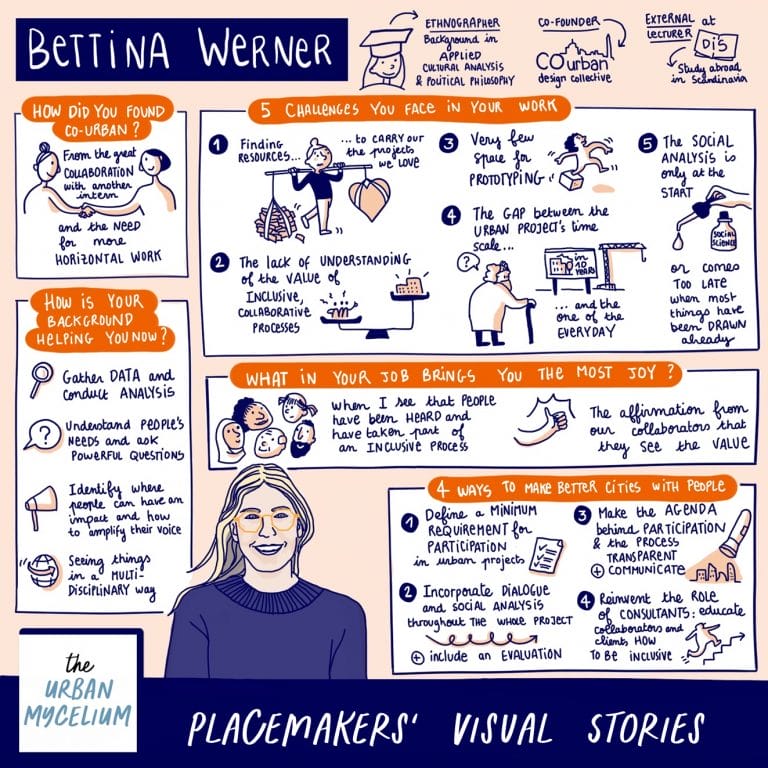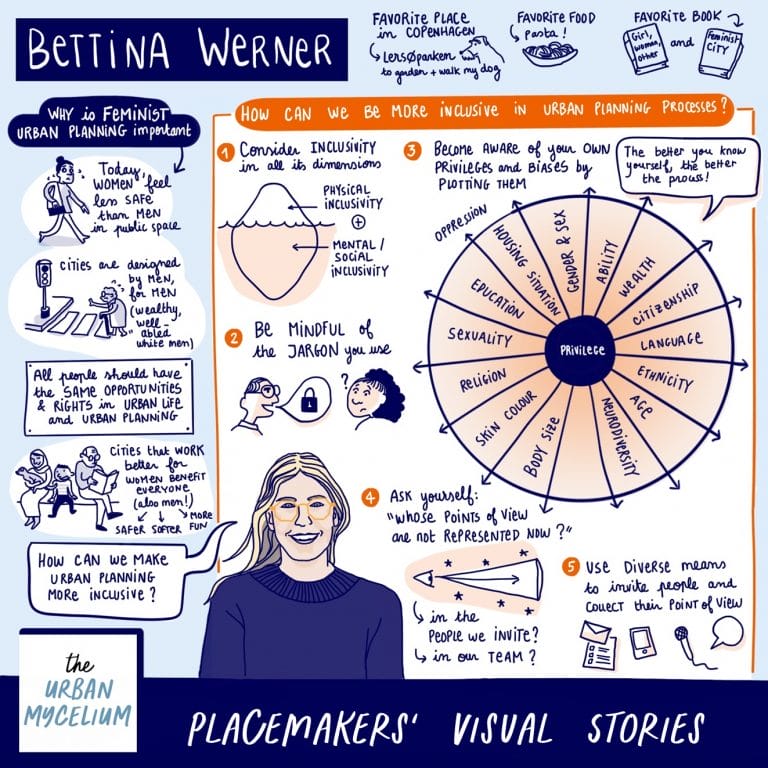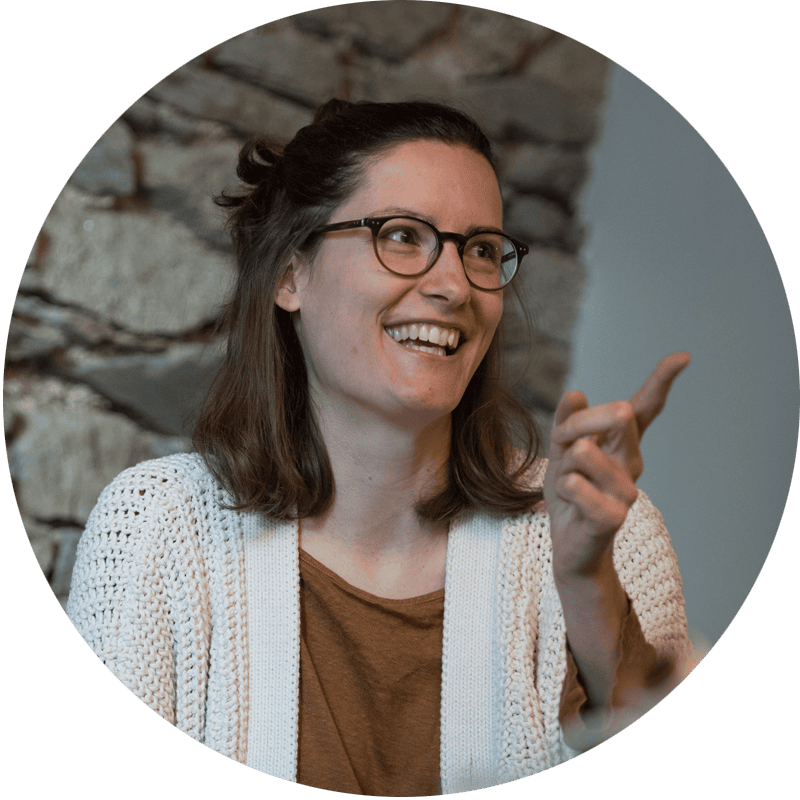In this episode of the Placemakers’ Visual Stories, I had the pleasure to interview Bettina Werner, ethnographer and co-founder of COurban in Copenhagen. We talked about feminist urbanism and how we can be more inclusive in urban planning processes.
Everyone should have the same opportunities and rights when it comes to making and enjoying the city. But in practice, this is not what happens. Read the visual summary of my conversation with Bettina to learn more about:
- Why feminist urban planning is important
- Why it is important to check your own privileges when leading participatory processes
- How we can be more inclusive in urban planning processes
It all starts by questioning one’s personal biases, Bettina says. It is useful to do a quick power check every once in a while to see whose voices are not represented – and then take appropriate actions to be more incusive. You can do a check of your privileges using a tool such as this “Privilege Wheel” beautifully designed by Maya Goodwill.
I find this topic fascinating. If you want to know more about gender-inclusive cities, you can listen to Bettina and her colleague Amalie’s great intervention at the Louisiana Museum of Modern Art in december 2021. And here is Bettina’s must read: Feminist City, by Leslie Kern.
Cities that work better for women… work better for everyone (also men)!



